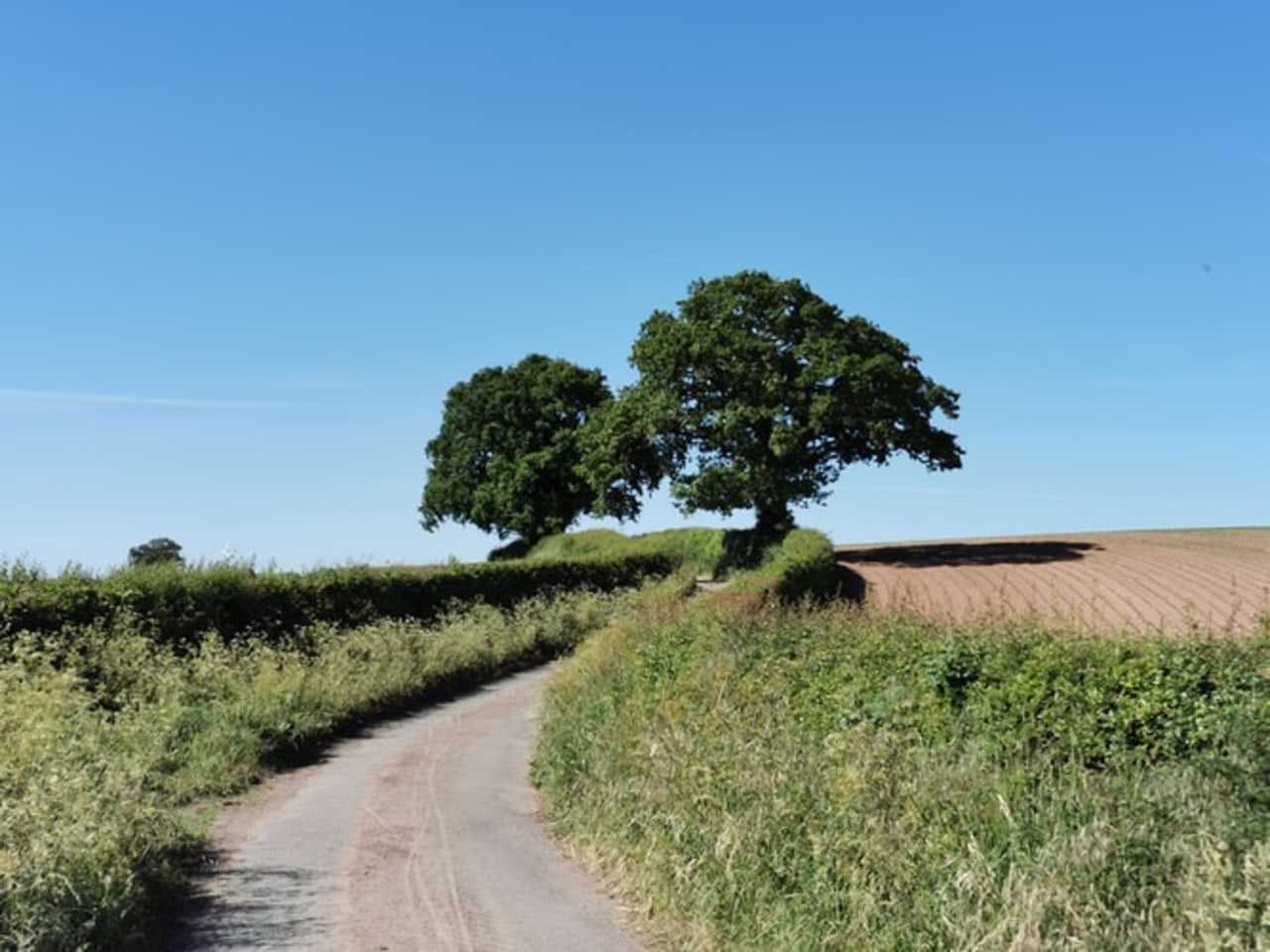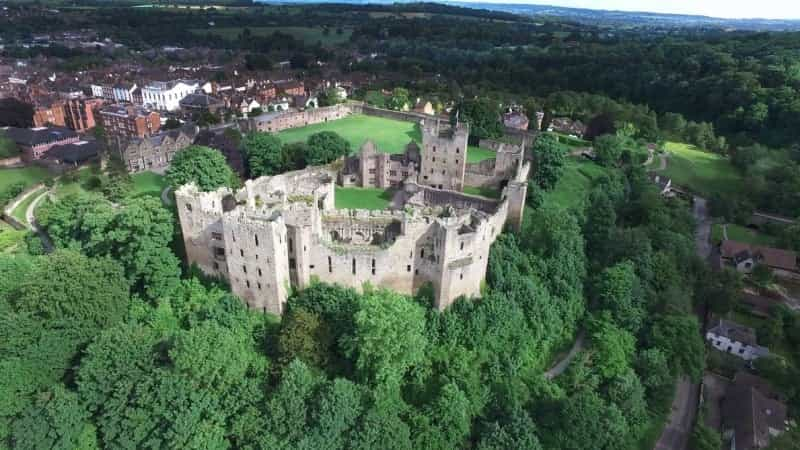10 Of The Best Things To Do In Shropshire
Whether you’re planning a day out or a week’s holiday, there are plenty of things to do in Shropshire. Ironbridge Gorge, whose 18th-century cast-iron bridge gave the area its name, is one of the UK’s most complete world heritage sites. The Shropshire Hills around Church Stretton are an Area Of Outstanding Natural Beauty, and a string of fortifications guarding the Welsh border includes medieval Ludlow Castle, whose well-preserved remains stand among half-timbered buildings in Ludlow town centre.
Elsewhere, you can ride on a vintage steam train on the Severn Valley Railway. Stately homes like 13th-century Stokesay Castle and the 18th-century estate at Attingham Park are waiting to be explored, and kids are likely to love the vintage planes and tanks on display at Cosford’s RAF Museum.
The River Severn winds through the county, passing market towns like Shrewsbury and Bridgnorth, with opportunities to explore by boat or on foot.
Whatever the reason for your visit, Shropshire has plenty to keep the whole family happy.
Check out our list of 10 of the best things to do in Shropshire.

Ironbridge Gorge
Named a UNESCO World heritage Site in 1986, Ironbridge was at the heart of the UK’s 18th-century industrial development, and is acknowledged as one of the cradles of the Industrial Revolution. The area’s rich natural deposits of iron ore, coal and limestone made it an obvious site for development, and the River Severn, flowing through the valley, provided a means of transport for the finished products. It was here that engineer Abraham Darby III built the world’s first cast-iron bridge, an impressive span that still remains, and gives the town its name.
Among the remains of foundries, original workers’ dwellings, mines and factories, the area is home to no fewer than 10 museums, exploring the manufacture and production of tiles, china, iron and tobacco pipes, among others. The Gorge Museum traces the significance of the river, while in the recreated Victorian Town at Blists Hill, costumed actors populate shops, working foundries and a historic funfair. At the Enginuity Museum, hands-on exhibits and experiments bring the area alive for kids.
Today, in some ways, the peacefulness of the wooded valley belies its industrial past, but a walk across the original bridge is an evocative reminder of a site that shaped the history of the world.
Severn Valley Railway

Running for 16 miles along the beautiful Severn Valley between Kidderminster and Bridgnorth, this heritage railway line passes through the Severn Valley Country Park and gives you the chance to ride aboard an original early-1900s steam train.
It’s possible to break your journey at stations on the way, for a walk by the river or a visit to The Engine House in Highley, where more historic steam and diesel trains are on display. There are opportunities to dine aboard, or do a spot of gin tasting. If you’re a diehard enthusiast who wants to splash out, Footplate Experiences give you the chance to ride in the engine and stoke the fire (needless to say, it’s worth booking these in advance).
Stokesay Castle
A fortified manor house built by wool merchant Laurence of Ludlow in the late 13th century, Stokesay Castle stands in peaceful countryside close to the Welsh border and remains largely unchanged since its early days. A moat surrounds the walled enclosure, accessed via a 17th-century half-timbered gatehouse with elaborate wood carvings of angels and dragons. Inside, you can admire the vaulted timber roof, gabled windows and staircase of the 700-year-old Great Hall.
Free audio tours tell you all about the castle and its history, and you can climb the stone steps of the South Tower for sweeping views over the Shropshire Hills. If you’d rather just kick back and admire the view, there’s also a cosy tea room in the grounds.
RAF Museum, Cosford
Occupying a series of World War II hangars, this intriguing museum traces the history of the Royal Air Force. Its huge collection features experimental prototypes and vintage aircraft from Britain, Germany and Japan, used in transport, training and battle, including a Supermarine Spitfire Mk. 1. You can also view uniforms and military artefacts tracing 100 years of the RAF, as well as tanks and vintage cars in the National Cold War Exhibition.
The Michael Beetham Conservation Centre gives you the chance to see aircraft and artefacts that are being conserved or restored. The museum’s 4D Experience features animated visuals, moving seats, water and smoke effects, and simulates flights with the Red Arrows display team and a World War I dogfight. Last but not least, if you’re visiting in September, the museum’s annual air show gives you the chance to watch vintage and modern aircraft performing in dramatic flying and aerobatic displays.
Hoo Zoo & Dinosaur World

If you want to give your children a thrill, look no further than this family-run farm attraction set in 32 acres of Shropshire woodland. Alongside naturalistic enclosures housing parrots, tortoises, otters and meerkats, there are snakes and giant lizards, foxes, owls and boa constrictors, some of which you can touch (if you dare), as well as regular feeding sessions and encounters with domestic farm animals. If someone has a birthday or deserves a special treat, you can book exclusive keeper-style meetings with many of the animals and birds too.
But these aren’t the only animals you can meet. Lurking in the woods and paddocks around the farm are 15 animatronic dinosaurs for you to seek out, including, of course, a T-Rex. And whatever you do, don’t miss the legendary Hoo Farm Sheep Steeplechase. Run every day (except Friday) from April to September, this amusing spectacle sees the farm’s woolly residents battling it out over jumps, with teddy bears as jockeys. You don’t see that every day…
Walking near Church Stretton
Laced with footpaths and with far-reaching views, the Shropshire Hills around Church Stretton are an Area of Outstanding Natural Beauty that draws walkers, horse riders and mountain bikers. On a visit here, you might even see a glider being launched skywards in the traditional way, using a bungee cord.
Depending on your energy levels, you can meander among the round-topped hills, woods and heathlands close to the town, seek out the pretty Lightspout waterfall, or set out to reach the highest point of the Long Mynd, a heather-covered plateau with sweeping views of the Carding Mill Valley and the Welsh mountains.
Much Wenlock Priory
If you love a quiet stroll in an atmospheric setting, Wenlock Priory is the place for you. An impressive Norman ruin on the site of an earlier Anglo-Saxon monastery, the complex prospered as a pilgrimage site after the discovery of Saint Milburge’s relics here in 1101. The site is home to an elaborately carved stone chapterhouse from the 12th century, the handsome remains of a 13th-century church, and a library with original medieval floor tiles. The Cloister Garden is lined with artfully shaped topiary hedges, and you get extra points for spotting the octagonal ‘lavabo’, a carved stone basin where monks used to wash before dinner.
All in all, it’s a place that’s crying out for a picnic, and if you’re a dog lover, you’ll be glad to hear that your hound can accompany you too, if you keep them on a lead.
Titterstone Clee Hill
Titterstone Clee is another treat for walkers and photographers, with the added bonus that you can set off on a hike from a road that runs right across the middle, or a car park near the top. Its steep, grassy terrain is dotted with places to explore, a curious combination of Bronze-Age cairns, Iron-Age earthworks and abandoned early 20th-century quarry buildings, with distinctly more modern radar towers and weather stations on the summit.
It’s also one of the highest points for miles around, so whether you leave your car or not, you’ll still be able to enjoy dramatic views of the Malvern Hills and the Worcestershire countryside down below. And if you fancy a longer walk, the Shropshire Way heads north from the summit to Brown Clee, or southwest to Ludlow.
Ludlow Castle

Set on a hilltop overlooking the River Teme, this classic castle was founded in the 11th century, played a part in both the Wars of the Roses and the English Civil War, and became a royal palace in the 15th century. Expanded, restored and embellished over the centuries, many of its buildings remain largely intact, and you can follow a winding route through its grassy courtyards, keeps and corridors, as well as a long section of the battlements.
The castle also acts as the hub for September’s Ludlow Food and Drink Festival, and hosts a medieval fair at Christmas. The surrounding town is renowned for its many half-timbered buildings, and ambling down to the river rewards you with a peaceful woodland walk beside the water.
Attingham Park
Peaceful Attingham Park is a Regency mansion that sits at the heart of a country estate with 200 acres of parkland to explore. Four well-signposted trails, which take between 30 minutes and two hours to walk, leave the Stables Courtyard and wind through 18th-century pleasure grounds, a deer park and mature woodland.
Closer to the mansion, there’s a vast meadow for picnics, with log piles, willow tunnels and natural play areas for children, and you can wander through colourful flower displays in the restored walled garden and the orchard. If you eat at the on-site cafe, you may even get to taste some of the fruit and vegetables grown here.
If Ludlow and Stokesay got you interested, check out our list of 7 incredible Shropshire castles.
If all you need is a pair of walking boots, check out 8 walks In The Shropshire Hills.
Eager for a pint after a day of hiking? Here’s our list of the 10 best pubs in Shropshire.
Looking for somewhere to stay? Check out our list of the best campsites and holiday parks in Shropshire.